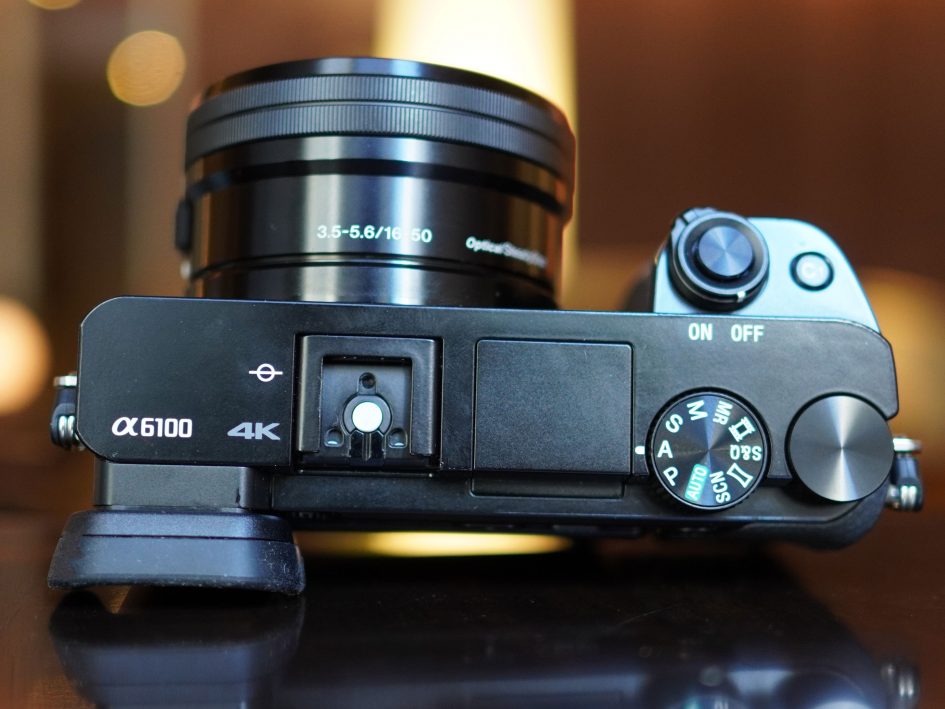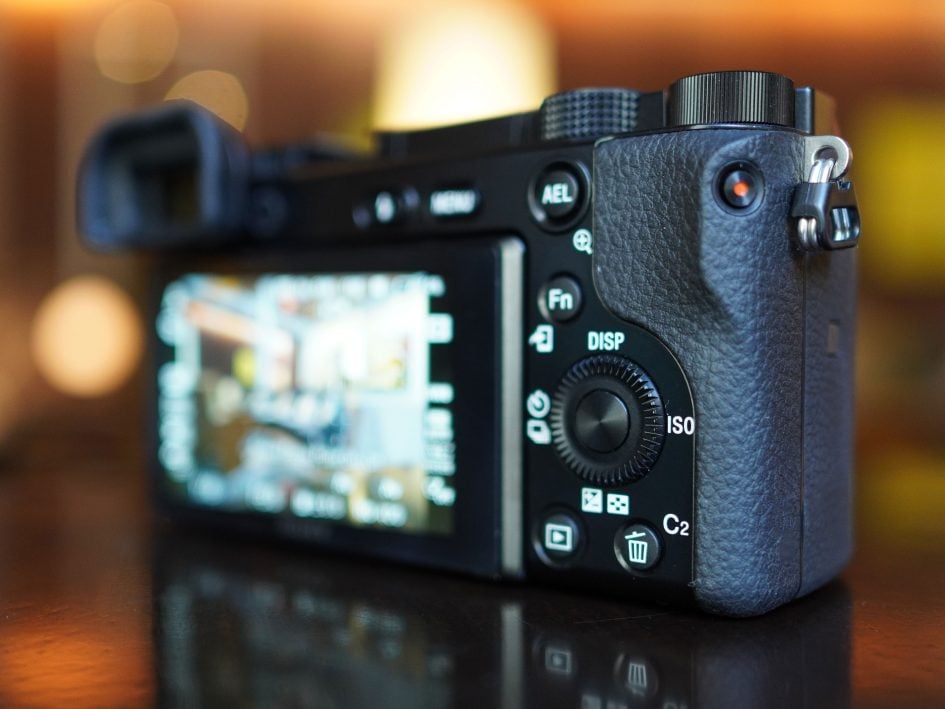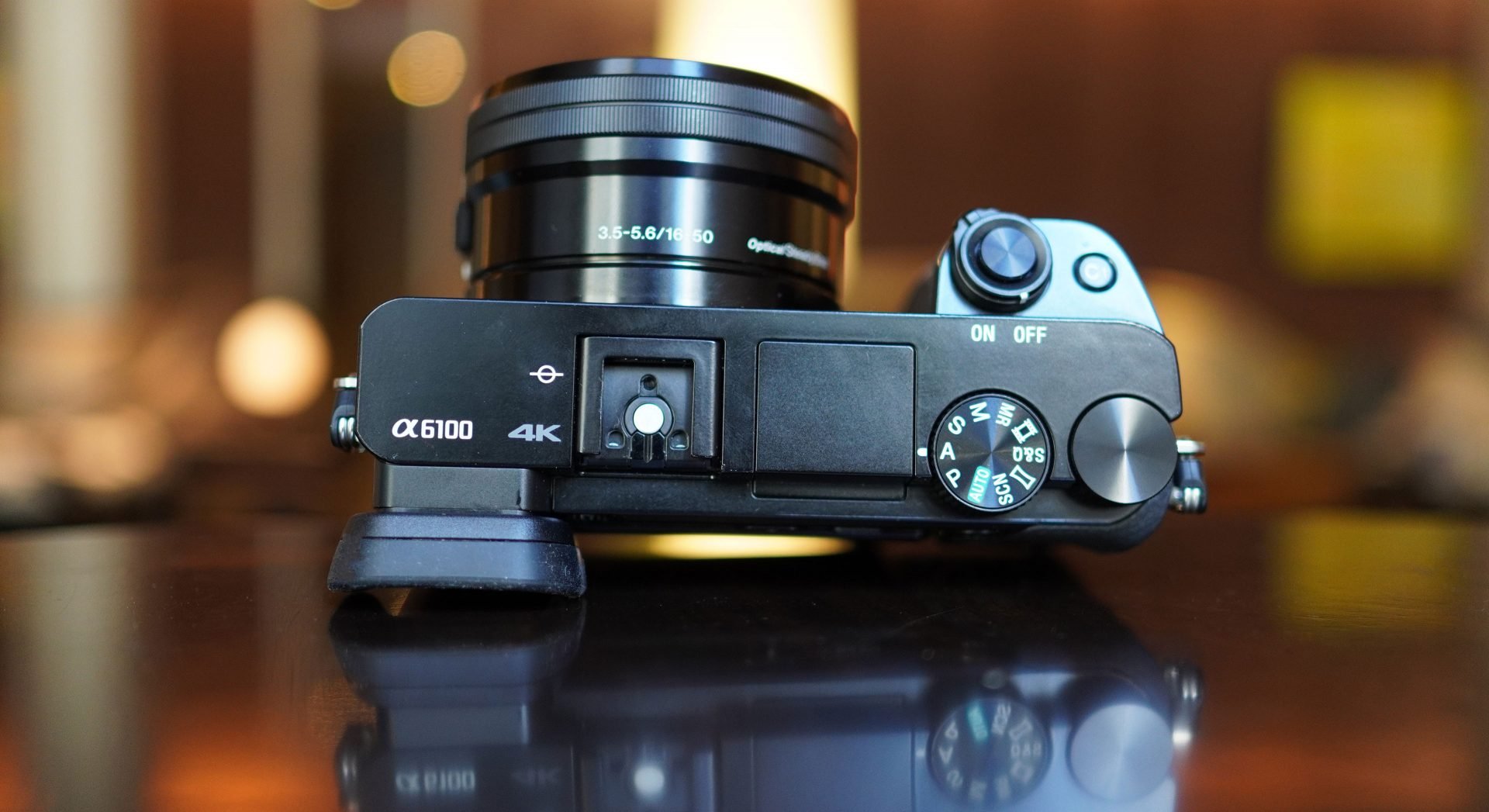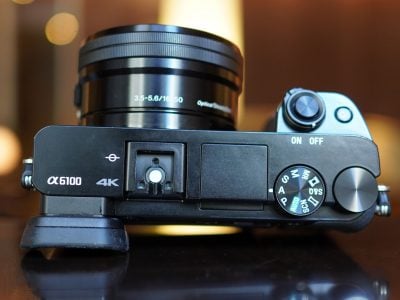Sony A6100 review so far
-
-
Written by Gordon Laing
The Sony A6100 is an upper entry-level mirrorless camera with a 24 Megapixel APSC sensor, 4k video, 11fps shooting, viewfinder and tilting touchscreen. Announced in August 2019, it’s the official successor to the five and a half year old A6000, greatly improving the AF and video features. But what else has changed?
The non weather-sealed body remains much the same, with the same battery, single card slot and controls, but the A6100 now gains Sony’s latest flip screen which angles down further to 74 degrees and all the way up by 180 degrees to face you for vlogging or selfies; the old A6000 screen only angled up by 90 degrees. This will make the A6100 a more popular choice for vloggers, although note mounting any kind of accessory to the hotshoe will block the screen. While the earlier A6000 could use an optional Sony mic connected via the multi-interface pins in the hotshoe, it lacked an analogue mic input, but now the A6100 adds this feature, alongside Micro HDMI and Micro USB ports, the latter now able to both charge and power the camera.
In terms of image quality, the A6100 uses the company’s latest 24 Megapixel APSC sensor, introduced on the A6300 which means the resolution may be the same as the A6000, but the A6100 gains a broader and denser autofocus array across most of the frame that supports the latest real-time eye AF and animal eye-detection, along with burst shooting up to 11fps with autofocus or 8 with live feedback. You’re also getting Sony’s latest colour processing which looks better to my eyes. The newer sensor also means the A6100 gets 4k video at 24, 25 or 30p, when the old A6000 only offered 1080 video. It also means the A6100 enjoys 1080 at 120p for slow motion with sound and autofocus, when the old A6000 was limited to 1080 up to 60p. Plus you also get unlimited recording times, letting you record clips longer than half an hour.
So far the A6100 shares a great deal with the higher-end A6400 which costs $150 more with the same lens, but the first major difference is a lower resolution viewfinder on the A6100 – in fact the same SVGA 800×600 panel as the original A6000, versus XGA 1024×768 on the A6300 upwards. The A6400 also sports a tougher weather-sealed body, as well as S-Log movie profiles for grading that are absent on the A6100, but those are the three main differences.
Returning to the screen, the A6100 offers a touch-sensitive panel which allows you to tap to reposition the AF area, a feature lacking on the original A6000, although sadly it won’t do much else. Like other Sony cameras to date you can’t tap your way through the Fn menu or main menu systems, nor even swipe through images in playback.

So to recap, spending $300 extra over the A6000 gets you the A6100 with a screen that’s now touch sensitive and flips all the way up to face you, a broader and more confident autofocus system, 4k video, 1080 slow motion, unlimited recording times and a microphone input. Spending another $150 on top of that gets you the Sony A6400 which upgrades the build quality with weather-sealing, increases the viewfinder resolution and adds S-Log profiles for grading in movies. I’d say while the A6000 remains a bargain for anyone looking for a budget mirrorless cameras that still punches above its weight for sports and action, the A6100 is well worth spending the extra for those who shoot video and value having 4k, a selfie screen, unlimited recording, mic input and slow motion. It may also make potential A6400 buyers question if they really need weather-sealing, an XGA viewfinder and S-Log profiles, or if they should save $150.

Oh and if you’re wondering where the Sony A6600 fits into the lineup, it costs $500 more than the A6400 and adds built-in stabilisation, a headphone jack, eye-detection in movies and the Z-series battery for much longer life. If you demand more effective stabilisation though, it may be worth investing that $500 difference on a gimbal for an A6400 or even A6100, and using a USB battery to extend the power.
Check prices on the Sony A6100 at B&H, Adorama, or Wex. Alternatively get yourself a copy of my In Camera book or treat me to a coffee! Thanks!





